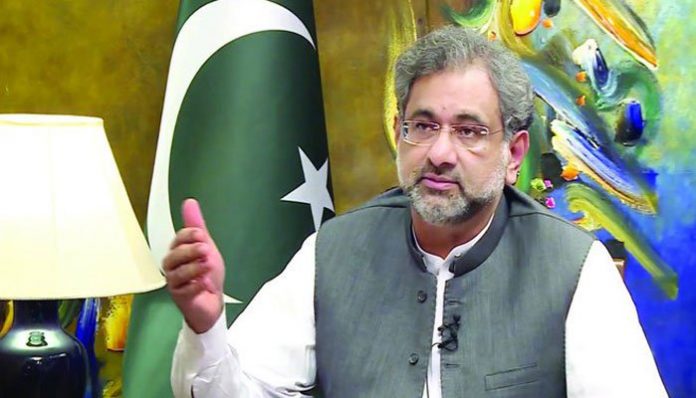LAHORE:Pakistan’s Prime Minister Shahid Khaqan Abbasi said that the government has no plans to further devalue the rupee. Meanwhile, International Monitory Fund (IMF) mission welcomed the rupee devaluation. IMF said that it expects the economy to grow by 5.6 per cent in a current fiscal year.
Addressing a press conference in Islamabad on Thursday, the Washington-based lender’s country mission chief, Harald Finger, said that it was a sole decision of Pakistan’s central bank to make rupee a flexible currency.
Pakistani Rupee has dropped 4.3 per cent since December 8 to 110.80 per dollar. The rupee fell following State Bank’s decision to allow the currency exchange rate to adjust to market conditions. However, since this decision, the Rupee has become the most devalued currency globally according to data compiled by Bloomberg.
Profit earlier reported that a United Nation report cautioned Pakistan’s policy of keeping the rupee stable could become untenable if the US dollar appreciates against other world currencies. The report said that a stable rupee maybe satisfying for some traders and investors but it could prove disastrous for Pakistan and can further erode its foreign reserves. The report cautioned that authorities may be forced to devalue the currency at some point in time.
PM Abbasi told Bloomberg that a weaker rupee will not have a huge impact on the economy and is expected to have an inflationary impact of 0.5 per cent. He added the “markets will decide” the rupee’s level and that the move will help address Pakistan’s deteriorating external position.
Meanwhile, State Bank of Pakistan had earlier claimed that rupee was strong and SBP did not plan to devalue the currency. However three days after SBP’s decision to devalue rupee, SBP Governor Tariq Bajwa came forward and said that the exchange rate was now closer to the equilibrium. The rupee has endured three consecutive days of depreciation since falling cumulatively 4.86 per cent or Rs 5.13 and on Tuesday it shed a further 1.6 per cent on Tuesday, touching Rs 110.64.
It is should be noted that Pakistan has recently sold $ 2.5 billion worth bonds last month however some analysts believe that Pakistan may still need an IMF bailout.
On the other hand, IMF’s country mission Chief Harald Finger said that Pakistan has not requested for a new loan program.
IMF forecasts economic growth of the country to 5.6 per cent during the current fiscal year falling short of a 6 per cent GDP growth target set by the government this year. However, “Tight monetary stance was required to keep fiscal discipline in order to reverse widening external imbalances. Besides, strong reform effort is needed to maintain external stability and ensure debt sustainability. The government should pursue broadening of the tax base and strengthening of the monetary policy framework,” said Harald Finger.
The World Bank in October estimated that Pakistan would require $ 17 billion of external financing or 5 per cent to 6 per cent of gross domestic product in the current financial year through June for Pakistan to bridge its debt payments and current account deficit.
Meanwhile, Pakistan’s foreign-currency reserves have dipped 29 per cent to 12.9 billion as of October.
Whereas the total foreign debt burden of the country has swelled by Rs 85 billion after the decision of State Bank of Pakistan (SBP) to depreciate the local currency by 4.4 per cent in last four days.
“The recent depreciation in Pak rupee has increased our debt burden by Rs 390 billion,” said Arif Habib Securities Analyst Arsalan Hanif.

























